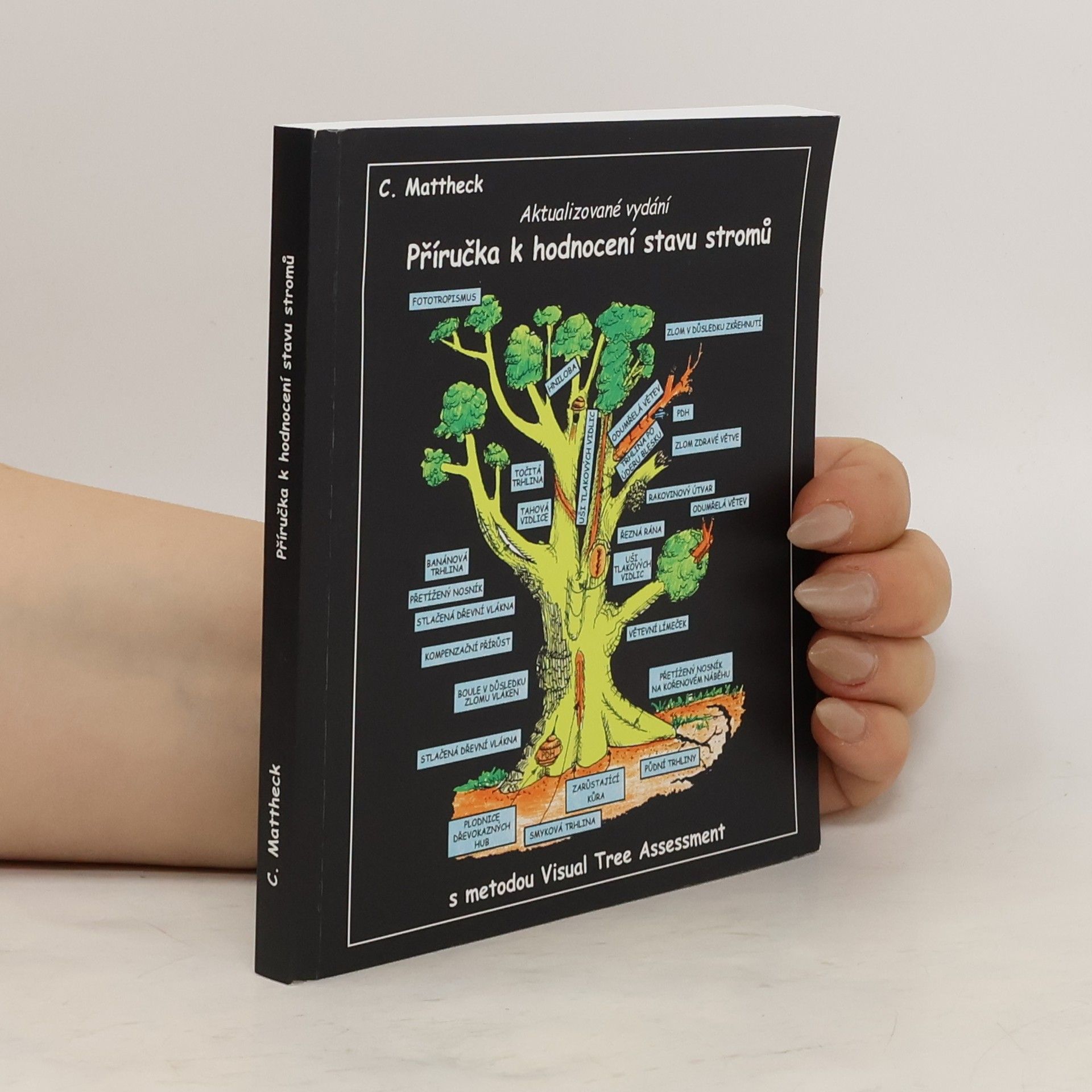Příručka k hodnocení stavu stromů
S metodou Visual Tree Assessment (dále už jen VTA)






S metodou Visual Tree Assessment (dále už jen VTA)
This Book: is a digest of a quarter century of tree research at the Karslruhe Research Centre (now KIT) promotes understanding of the body language of trees, explains defect symptoms, their failure, and their sorrows, shows fungal fruit bodies as witnesses in court, discloses universal forms in animate and inanimate nature, saves people from trees and trees from people.
Learning the body language of trees and fungi, and understand their warning signals Close-to-nature biomechanics for everyone Tree preservation with minimized risk for people For all who love trees or are responsible for trees
Here are two physicists looking over the fence of physics, getting thrilled by the life and growth of trees, taking an altogether different, exciting view of wood: trees produce wood for their own benefit. They do not live for the benefit of man who builds his world using wood as a raw material. Timber is revealed in a different light, and the reader is taught to stop thinking of it in terms of defective beams and boards. Wood only fails as a part of the living tree. To us, the tree and wood biologists, this new definition is a real, inspiring challenge, which is just what Kubler and Mattheck intended it to be. Their answers may seem too simple or little logical to some of us; but the authors are not at a loss for sound and solid arguments. Their field studies prove the incredible, their hypotheses makes us want to get to the bottom of the un proven unbelievable. The authors' answers and arguments are bold and cour ageous. They arouse our curiosity and force us to fathom the facts. It seems as if Kubler and Mattheck wanted to trick us into believing that trees only live and react following mechanical rules and strategies. To tell the truth, that was what I first suspected the authors of: but I was wrong.
Form und Versagen in Natur und Technik
Das Buch - führt ein in die Mechanik des Versagens - erläutert den Kampf der Belastung gegen Material und Form - will Ihr Auge schärfen für Schwachstellen in Konstruktionen - zeigt, wie man Schadensfälle durch kluge Formgebung vermeidet - ist die Frucht langjähriger Arbeiten am Forschungszentrum Karlsruhe GmbH WERDEN SIE SCHADENSKUNDLER!
Enzyklopädie des Visual Tree Assessment
Das Buch * bündelt ein Vierteljahrhundert Baumforschung am Forschungszentrum Karlsruhe (heute KIT). * verhilft zu tiefem Verständnis der Körpersprache der Bäume. * erklärt ihre Warnsignale, ihr Versagen und ihren Kummer. * zeigt den Pilzfruchtkörper als Zeugen vor Gericht. * offenbart Universalformen in toter und lebender Natur. * rettet Menschen vor Bäumen und Bäume vor Menschen! Die in diesem Buch auch beschriebene Baumkontrollmethode basiert auf Naturbeobachtung und Volksmechanik, verifiziert durch Computermethoden und Feldstudien. Sie ist Grundlage vieler Gerichtsentscheidungen und weltweit verbreitet. Das Buch ist ein Handschlag zwischen Wissenschaft und Baumfreund.
Dieses Buch ist die Weiterführung meines Buches „Verborgene Gestaltgesetze der Natur“, das in großen Teilen hierin mit aufgefangen ist. Wir haben somit die reifere Frucht aus langjähriger Forschung zur Schadenskunde, Schadensprävention und Naturbeobachtung. Es wird versucht, das in erbarmungsloser Auslese gereifte Optimum biologischer Strukturen so einfach wie möglich zu beschreiben und DENKWERZEUGE bereit zu stellen, um dieses Optimum auf technische Bauteile zu übertragen. Dazu dienten bislang Computerprogramme, die zahlreich in Lizenz gegeben wurden und die die Industrie nutzte und noch nutzt. Neueste Erkenntnisse haben uns ermutigt, diese Wege zur vorteilhaften Bauteilform mit einfachsten Mitteln für jedermann zugänglich zu machen. Mit den hier vorgestellten Denkwerkzeugen kann auch ein Schüler gefährliche Kerben im Bauteil entschärfen - und dies alles mit Geodreieck und Bleistift, ohne Computer. Bauteiloptimierung für alle! Auch für den kleinsten Betrieb - auch für das Handwerk.
Einführung in die Körpersprache, Faltenschriebe und Körperhaltungen. Parallelen zwischen Mensch, Tier und Baum. Aufrechte Haltung als Designregel der Natur? Vorteile des Körpereinsatzes für Lehrende!